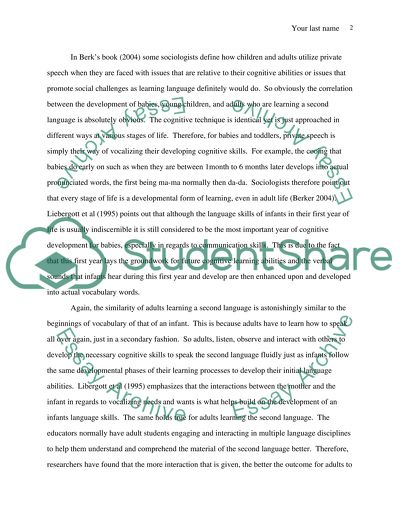How Babies Learn Language Compared to How Adults Learn a Second Essay. Retrieved from https://studentshare.org/miscellaneous/1532366-how-babies-learn-language-compared-to-how-adults-learn-a-second-language
How Babies Learn Language Compared to How Adults Learn a Second Essay. https://studentshare.org/miscellaneous/1532366-how-babies-learn-language-compared-to-how-adults-learn-a-second-language.


